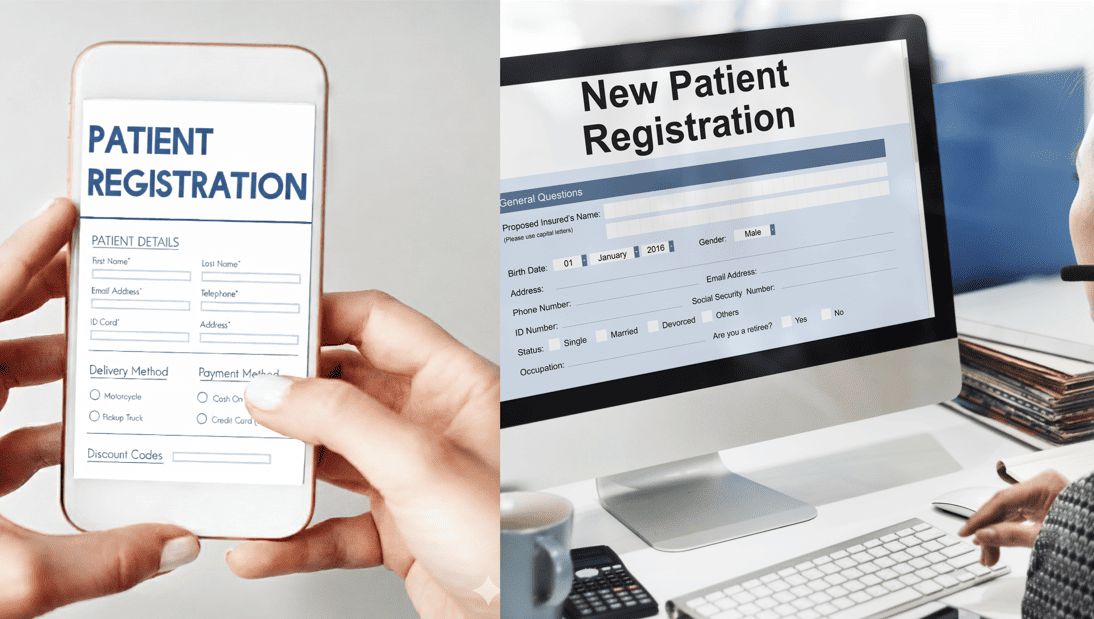Top HIPAA Compliant Online Forms for eClinicalWorks (eCW)
💡 HIPAA compliant online forms are transforming patient intake. Digital forms are replacing paper processes with secure, automated, and integrated...
6 min read
Gregory Vic Dela Cruz : Sep 8, 2025 10:00:00 AM
.png)
Table of Contents
Every clinic visit starts with paperwork. Before a patient meets their doctor, they complete forms that capture essential information. These forms shape the first impression of the clinic. A smooth intake process creates confidence. A clunky process with long waits and repeated questions creates frustration. That is why the patient intake form is a critical part of the patient journey.
Traditional paper forms are slow and error-prone. Patients must fill them out by hand. Staff then re-enter the same data into the EMR, which wastes time and increases the risk of mistakes. On the other hand, digital patient intake forms simplify the process. Patients can complete them in advance on their phone or computer. The information flows directly into the EMR, cutting check-in times and reducing workload.
In this article, we'll cover the following in depth:
We’ll also explore common problems with paper intake forms and learn why digital is the future. Finally, we’ll show how Curogram helps eCW users improve intake for the benefit of patients and staff.
A patient intake form is a document used to collect essential patient information before a clinical encounter. Its purpose is to ensure providers have accurate data to guide diagnosis and treatment, while also capturing administrative and legal details like insurance and consent. A patient intake form template gives clinics a structured way to collect consistent information from every patient, reducing gaps and ensuring compliance with regulations.
Most intake forms gather several categories of information. These include:
The patient intake form is the foundation for accurate, efficient care. Without it, providers lack context, billing is delayed, and compliance risks increase. Whether in paper or digital format, intake forms play a vital role in healthcare workflows.
When patients complete intake forms in advance, check-in is faster. Clinics save time during busy mornings, reducing waiting room congestion and keeping schedules on track.
Paper intake requires double work. Staff must re-enter data into the EMR, which leads to delays and errors. Digital patient intake forms flow directly into systems like eCW, freeing staff to focus on patient care instead of paperwork.
Handwritten forms are often hard to read. Errors in transcription can affect patient safety and billing accuracy. Digital systems ensure legibility, automate validation, and improve data security with encryption and controlled access.
No one enjoys filling out long paper forms in a crowded waiting room. Digital forms let patients complete everything at home or on their phone. This reduces stress, saves time, and signals that the clinic values efficiency. Strong first impressions improve patient loyalty and trust.
The new patient registration form is the most common intake document. It captures demographics, contact details, and insurance information. It serves as the foundation for building a complete patient record.
See a sample form here: New Patient Registration Form
A medical history form example records conditions, medications, and allergies. Providers rely on this information to make safe treatment decisions. It reduces risks such as prescribing a drug a patient is allergic to.
See a sample form here: Medical History & Allergies Form
This form captures insurance details, policy numbers, and billing contacts. It ensures that claims are submitted correctly and prevents payment delays. Digital versions can validate entries automatically, reducing denials.
See a sample form here: Insurance & Billing Information Form
Every clinic must protect patient privacy and meet legal standards. A consent and HIPAA authorization form documents a patient’s agreement to treatment and compliance with federal regulations. It also outlines how records can be shared.
See a sample form here: Consent & HIPAA Authorization Form
Some specialties require extra details. Pediatric clinics may ask about developmental milestones. Dermatology practices may include skin condition history. Cardiology may request details on heart health and family history. Specialty-specific intake forms allow clinics to tailor data collection to clinical needs without overwhelming patients with irrelevant questions.
See a sample form here: Specialty-Specific Intake Form
These patient intake form examples show how intake covers both clinical and administrative needs. By customizing templates to specific specialties and workflows, clinics can ensure a smoother experience for both patients and providers.
(Disclaimer: These sample forms are for educational purposes only and are not intended for use in practice.)
Paper intake forms require staff to manually enter information into the EMR. This step introduces delays and errors. Illegible handwriting, skipped questions, or misplaced papers increase the risk of mistakes that can affect both patient safety and billing accuracy.
Staff already handle scheduling, phone calls, insurance checks, and follow-ups. Adding the burden of manually re-entering intake information leads to burnout. Patients waiting in long lines to hand over forms feel equally frustrated. The process reduces efficiency on both sides of the desk.
Paper records can be lost, copied, or left out in public view. This creates compliance risks that violate HIPAA requirements. Without strict protocols, paper systems put patient data at risk and expose clinics to costly penalties.
.png?width=1536&height=1024&name=patient%20intake%20form%20with%20examples%20-%20mid%20(2).png)
Digital patient intake forms include encryption, access controls, and audit trails. They secure protected health information while making it easier for providers to review records. Unlike paper vs. online intake forms, digital workflows meet HIPAA compliance with less effort.
With online access, patients can finish their intake at home, on their phone, or on a tablet in the waiting room. This flexibility improves accuracy, since patients can look up medications or insurance details before submitting. It also saves time at check-in.
Digital intake forms push data directly into EMRs like eClinicalWorks. Providers no longer need to copy data manually, reducing errors and saving hours each week. This integration ensures doctors see accurate information in real time.
Online forms can send reminders, validate entries, and flag missing information. These automations reduce repetitive work, giving staff more time for patient care. Providers benefit from cleaner data and fewer delays during appointments.
Curogram provides fully HIPAA-compliant intake workflows. Every patient intake form template is designed to secure PHI through encryption and restricted access. Clinics can be confident that sensitive information is protected while making intake simpler for patients.
Not all visits require the same information. A new patient registration form for a primary care visit may ask general questions, while a specialty-specific intake form in cardiology or dermatology needs more detail. Curogram lets clinics customize intake forms by appointment type, provider, or location. This ensures patients only see relevant questions, avoiding overwhelm and improving completion rates.
Patients don’t want to remember passwords or download apps. Curogram’s digital patient intake forms are mobile-friendly and require no login. Patients open a secure link, complete the form on any device, and submit in minutes. This simplicity improves compliance and enhances the patient experience.
Clinics using Curogram report measurable results. Check-in times are reduced by up to 50 percent because patients complete forms in advance. Staff spend less time retyping data, which cuts transcription errors significantly. Patients enjoy shorter waits and providers start visits with accurate, complete information. The combination of efficiency and accuracy creates a stronger first impression and improves the overall patient intake form with examples workflow.
Paper intake forms slow clinics down and introduce risk. Digital intake forms solve these issues with secure, convenient, and integrated workflows. For eCW users, Curogram takes this even further by offering HIPAA-compliant forms that are customizable, mobile-friendly, and proven to reduce errors while speeding up check-in. Moving from paper vs. online intake forms is no longer a question of if—it’s a question of when.
The patient intake form is more than a piece of paper. It's the first impression a patient has of your clinic and the foundation for accurate care. Intake documents ensure providers have the information they need while keeping workflows efficient.
Paper intake slows down check-in, burdens staff and increases compliance risks. Digital patient intake forms solve these problems with convenience, accuracy, and security. They integrate with EMRs, automate data collection, and improve the overall experience.
If you're ready to move beyond outdated workflows, it’s time to switch to digital intake. Want to streamline your intake process? See how Curogram’s HIPAA-compliant online forms seamlessly connects with eCW. Get a free demo today.

💡 HIPAA compliant online forms are transforming patient intake. Digital forms are replacing paper processes with secure, automated, and integrated...

💡Learn how to improve patient experience in clinics with practical strategies. Through these, you can reduce wait times, improve communication, and...

💡 HIPAA-compliant online forms for Tebra users can transform your practice. They help streamline intake, reduce errors, and improve patient...